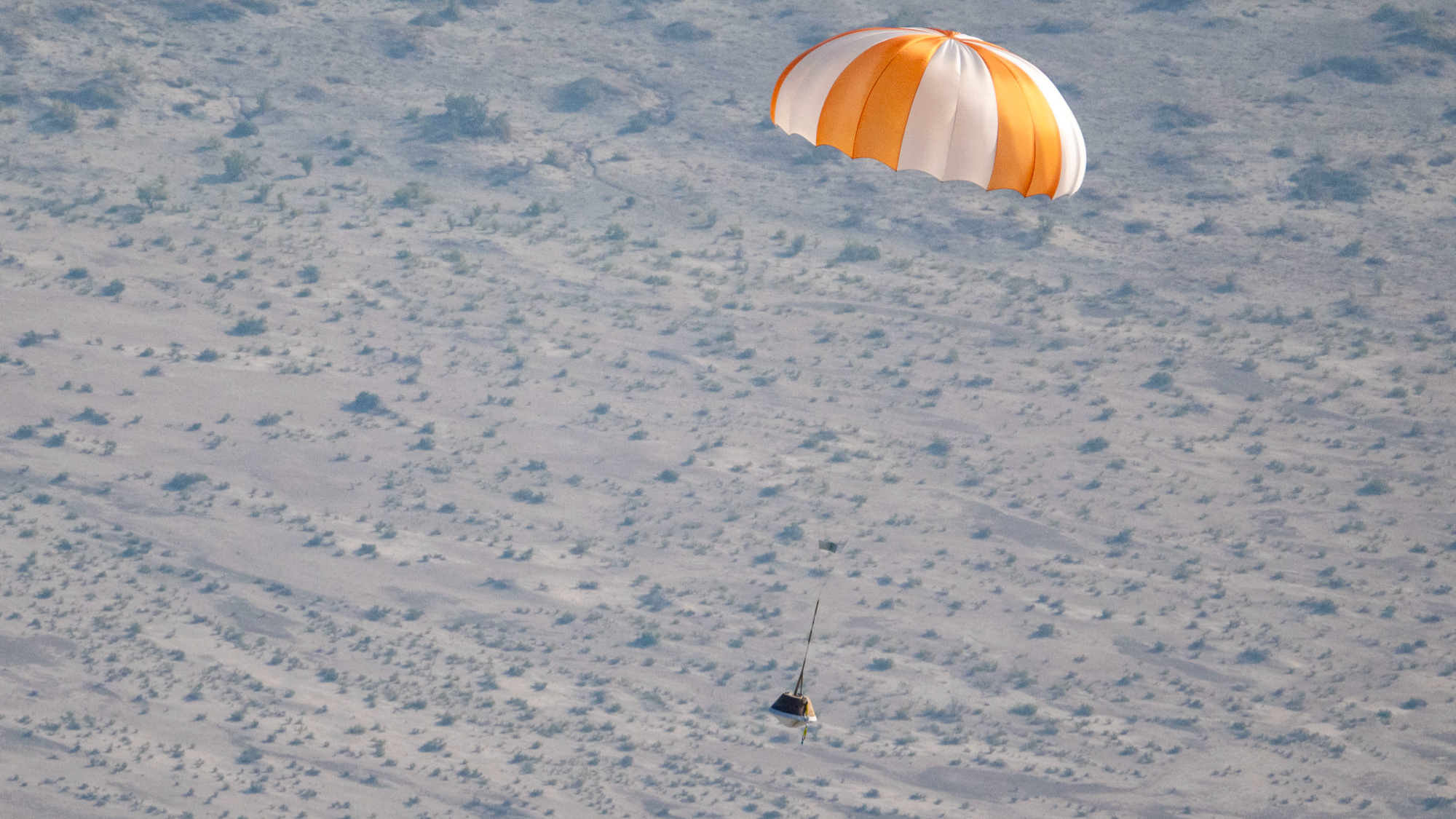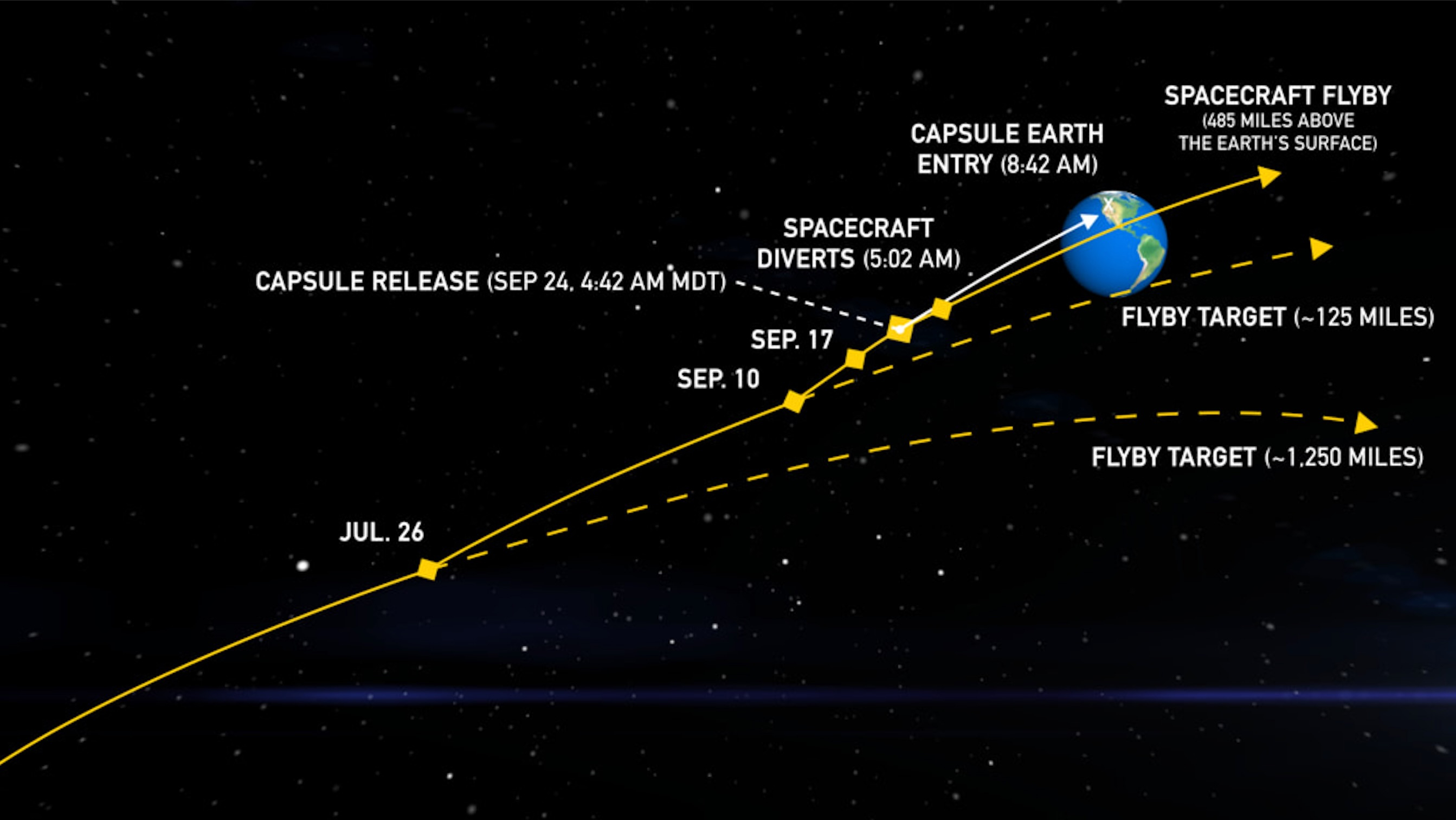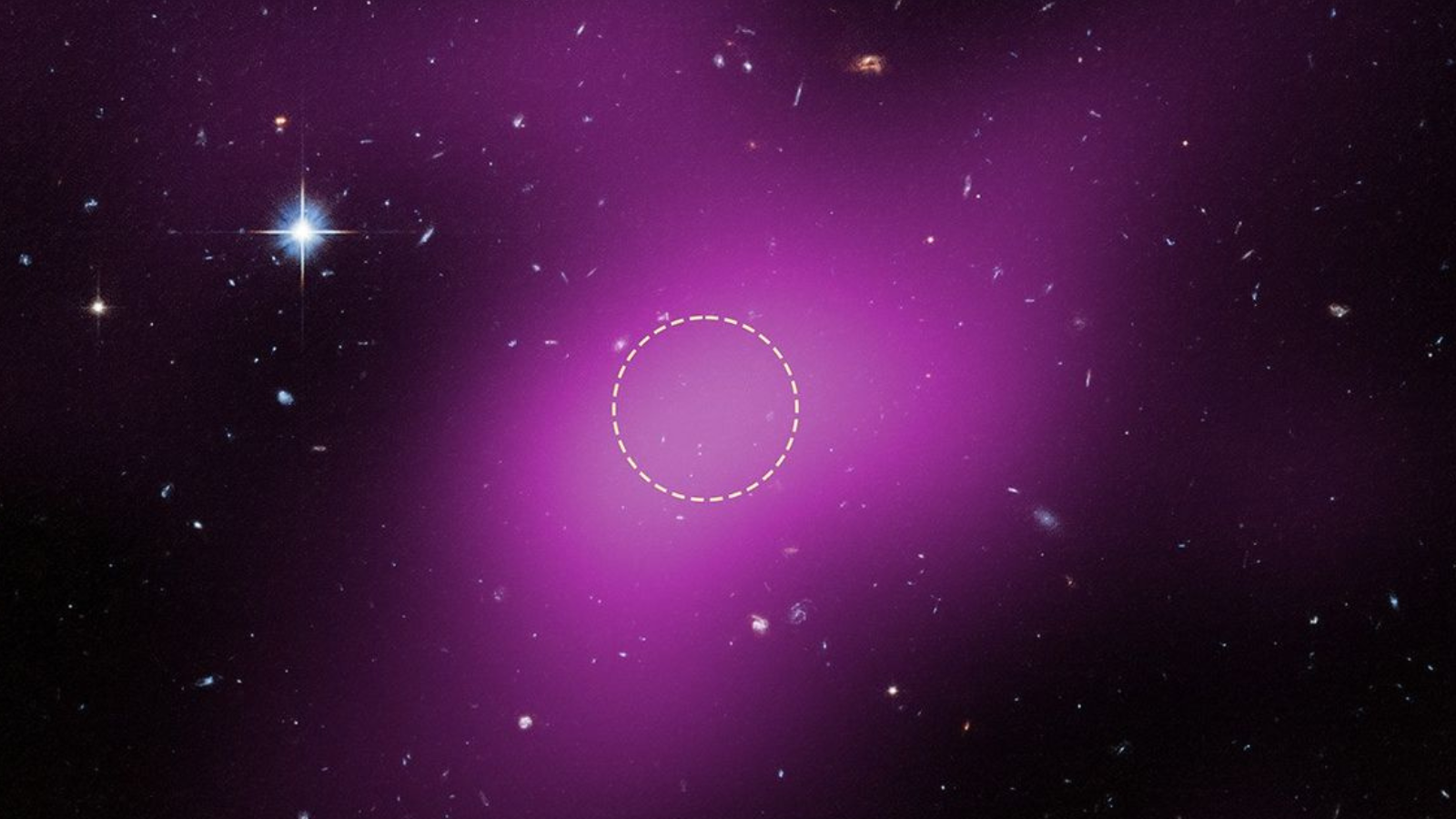OSIRIS-REx asteroid probe heads toward Earth for Sept. 24 sample delivery

NASA's first asteroid sample-return mission is in the home stretch toward its home planet.
The agency's OSIRIS-REx spacecraft fired its attitude-control thrusters on Sunday (Sept. 10) in a subtle but crucial maneuver that put the probe on course toward Earth.
The "trajectory-correction maneuver changed the spacecraft's velocity about 0.5 mph (less than 1 kph) relative to Earth. Without this tiny but critical shift, the spacecraft and its asteroid cargo would have flown past Earth," NASA officials wrote in a blog post on Monday (Sept. 11).
Related: Dramatic sampling shows asteroid Bennu is nothing like scientists expected
As that update noted, OSIRIS-REx is carrying precious cargo — about 8.8 ounces (250 grams) of dirt and gravel collected in October 2020 from Bennu, a potentially dangerous asteroid about 1,650 feet (500 meters) wide.
Monday's maneuver kept OSIRIS-REx on track to deliver a capsule containing that material to Earth on the morning of Sept. 24.
"Traveling at a precise speed and angle, it [the return capsule] will land approximately 13 minutes after release in a 36-mile by 8.5-mile (58-kilometer by 14-kilometer) predetermined area on the Department of Defense's Utah Test and Training Range southwest of Salt Lake City," NASA officials wrote in Monday's update.
Breaking space news, the latest updates on rocket launches, skywatching events and more!
OSIRIS-REx's samples will eventually be studied by scientists around the world, shedding light on the formation and evolution of our solar system. The material could also reveal the role that carbon-rich asteroids like Bennu played in delivering life's building blocks to Earth long ago.
As of Monday, OSIRIS-REx was about 4 million miles (7 million km) from Earth, traveling toward us at 14,000 mph (about 23,000 kph), NASA officials wrote in the update. The mission team may perform one more thruster firing on Sept. 17 if they deem it necessary, the blog post added.
It's just the sample capsule that's coming down to Earth, by the way; the OSIRIS-REx spacecraft will keep on flying long past Sept. 24. The probe will head toward the asteroid Apophis on an extended mission, eventually reaching the potentially dangerous space rock in 2029.

Michael Wall is a Senior Space Writer with Space.com and joined the team in 2010. He primarily covers exoplanets, spaceflight and military space, but has been known to dabble in the space art beat. His book about the search for alien life, "Out There," was published on Nov. 13, 2018. Before becoming a science writer, Michael worked as a herpetologist and wildlife biologist. He has a Ph.D. in evolutionary biology from the University of Sydney, Australia, a bachelor's degree from the University of Arizona, and a graduate certificate in science writing from the University of California, Santa Cruz. To find out what his latest project is, you can follow Michael on Twitter.

